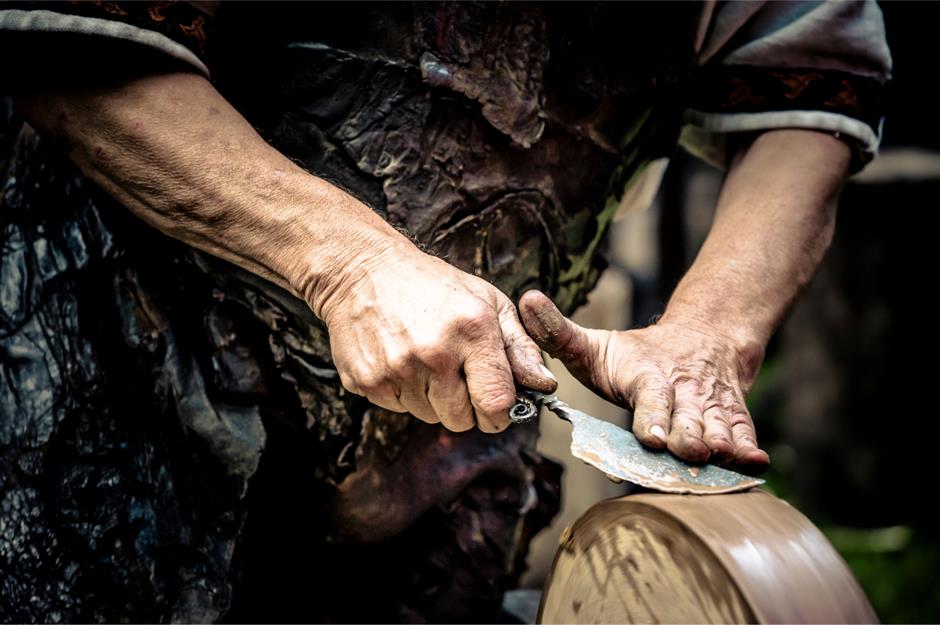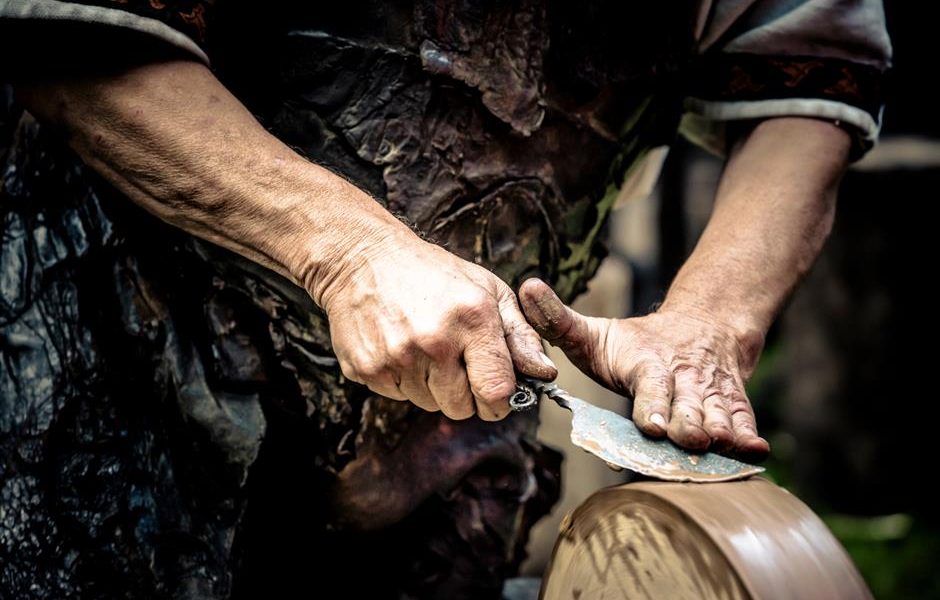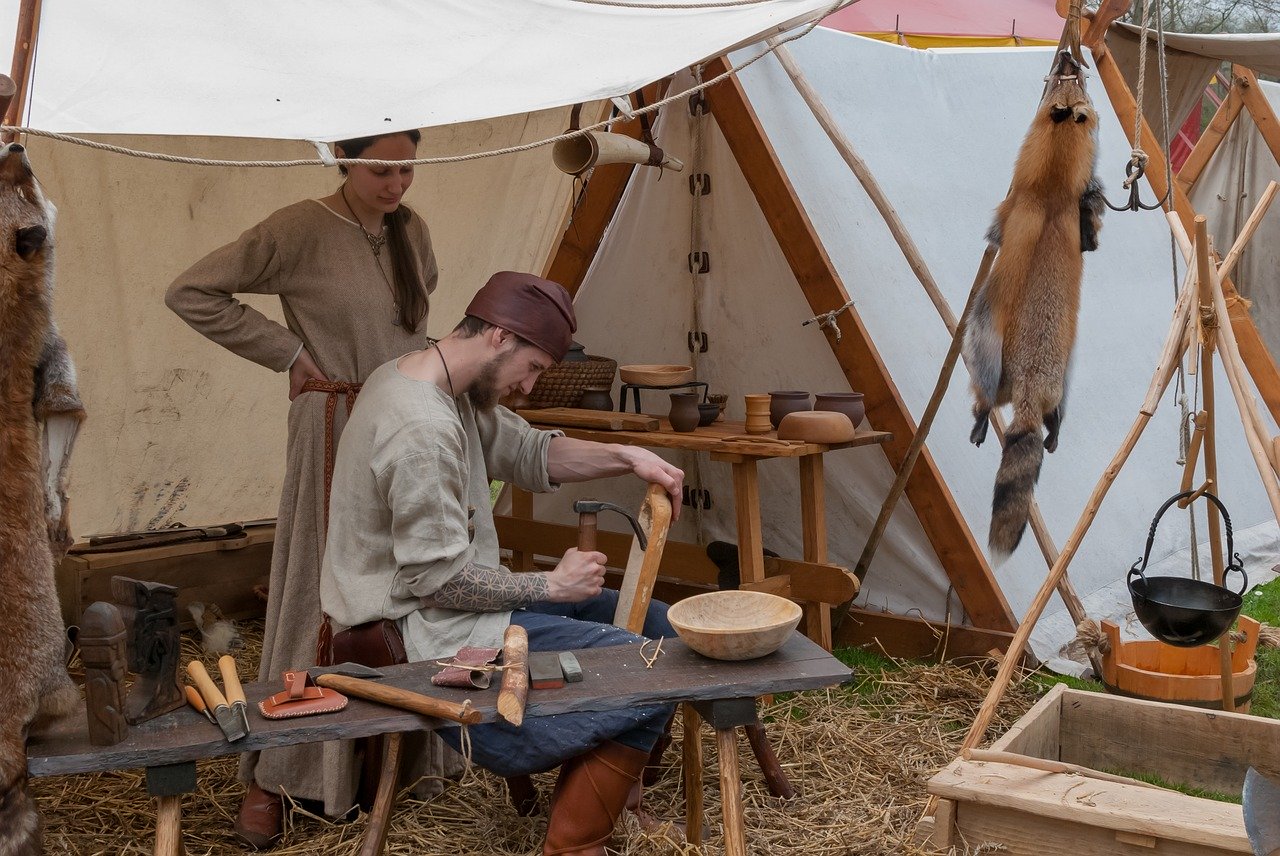Our world has changed continuously over the course of history. Many new manufacturing methods were developed and inventions created previously unimaginable jobs. Accordingly, many professions that were previously commonplace died out over time. Among them, there are also some for our modern understanding – very bizarre professions. We have compiled a list of five of these strange jobs.
Silhouette cutter
The task of a silhouette cutter was to paint and then cut out shadows. Probably originated in the Orient in the 18th century, the technique of Etienne de Silhouette, the finance minister of Louis XV picked up in France. This hobby cutter (yes, that was a hobby back then) and Sparfuchs preferred this cheaper alternative to expensive portrait painting. The technology spread from France to Germany. This is also the case in the film Goethe! picked up where Werther made a silhouette of his adored Charlotte.
Paternoster maker
In the Middle Ages, the rosary developed from a mixture of the Our Father and the Ave Maria. A string with stones on it was used as a counting aid. From this the rosary developed in the form it is still used today.
These prayer chains were probably made of all imaginable materials, depending on how wealthy the owner was. There were rosaries made of wood, mother-of-pearl, bone, horn, and coral. The most widespread material was amber, which is why the profession was often called amber turner.
The fossil resin was first sorted according to quality by a paternoster maker. Then he cut it into pearl-sized pieces, which were ground and polished with the greatest care until they really shone. As a final step, the pearls were strung on a string. This craft has been around since the 12th century and continues to this day.
Märbelpicker
Representatives of this profession knocked limestone into cubes with a pointed hammer. The Märbelpicker dug this from a depth of up to 20 meters. In addition, it always had to be stored correctly, as excessive temperature fluctuations made the rock break up quickly.
The processed limestone was packed in boxes, each of which was divided into compartments of the same size. This ensured that the knocked stones really had the same dimensions.
This is how you put the dice in a stone mill. There the stones were slowly ground into balls using water power. The marbles – or marbles – produced in this way were not only used as toys. Since explosive ammunition was difficult to handle for a long time, stone balls and marbles were used as gun ammunition until the first half of the 19th century. Especially in naval warfare, small stones were used to shoot the enemy rigging and thus render the enemy ship incapable of maneuver.
Chambery Turks and Court Moors
These job titles are likely to be quickly taken as insults by the public today. Rightly so. But what exactly is behind it?
The term Kammertürke was used under Friedrich III. introduced by Brandenburg. After the victorious battle of Ofen (today: Budapest), he placed two Ottoman prisoners in the service of his second wife. The characteristics of these special lackeys were striking Turkish clothing and a mustache.
The duties of the court Moor were very similar to those of the Chamberlain. He, too, was a personal page to rich and influential people. As the name suggests, the Kammermohr did not have a Turkish, but African, American, or Arab background. You could recognize him by his dark skin color and brightly colored clothes. The owners wanted to showcase their worldwide trade and power relations with their exotic valet.
Court Moors and Chambery Turks were not the only exotic species that were employed because of their external characteristics. At the time of the Baroque, they belonged to the entourage of royal houses along with dwarves and giants. Because during this time the fascination of the foreign took hold. In the course of this, turquoise, chinoiserie, and orangeries were built – and Chamber Turks and Court Moors were kept.

Whalebone Tear
From around 1500 to the beginning of the 20th century, fashion was unimaginable without one material: whale bones. This resource, also mistakenly called whalebone, gave shape to corsets, hoop skirts, hats, shoes, umbrellas, fan bars, fishing rods, and other similar items.
The whalebone ripper first split the whiskers with sharp, iron wedges. Pieces were then cut off with a shovel-like tool and the tips worked with a blunt chisel. The whalebone was then placed in water, where the hair was scraped off. After being softened again in hot water, the whalebone cut the whiskers for the last time into sticks or sticks, which are smoothed again.
The beards have been divided into different quality levels due to their flexibility and resilience. Each of these classes was processed into other products based on their characteristics.
We can hardly imagine these professions today. It remains to be seen which of today’s jobs will continue to exist in the future. But there are already future-oriented job offers.


